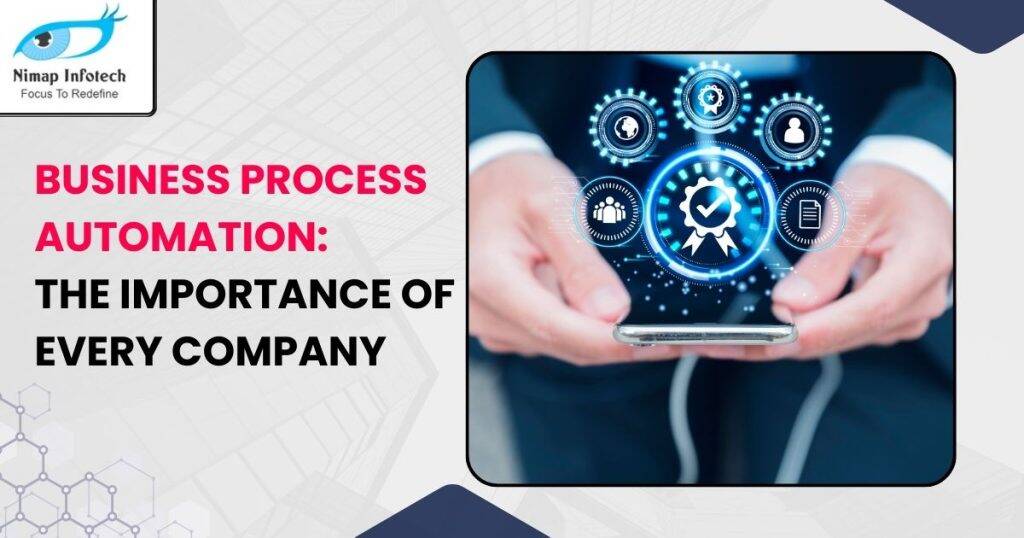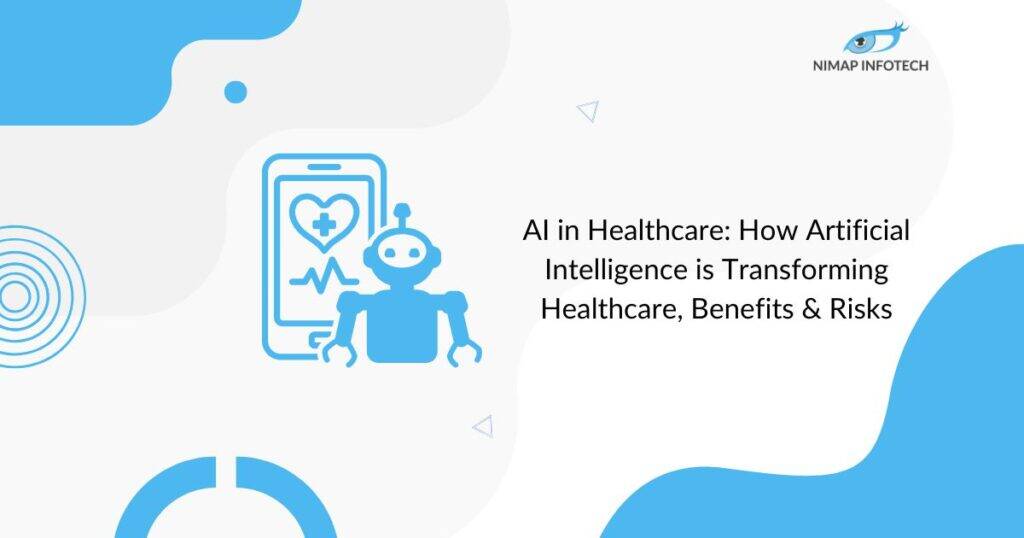Business Process Automation
On-Demand Software Experts in 60 mins
1 Week Risk-Free Trials
Fast Onboard, Only if Satisfied
Save 40% On Development Cost & Time
Proven Track Record
Global Clients
We Have Completed
Strong Developers
Business Process Automation
The use of software to reduce and optimize human labor inside a particular business process is known as business process automation. The main objective of BPA is to automate as many process components as possible because every process is made up of several activities and workflows.
BPA software, to put it briefly, is used to automate and improve a range of operations. Low-code automation is another term for BPA software. Allow us to assist you in transforming your applications and taking your business to the next level.
Our Global Clients











Our Startup Clients











Our Enterprise Clients



















Streamline Your Operations With BPA
Automate Your Business Processes And Boost Efficiency With Our BPA Software Solutions.

Our Business Process Automation Services
Rehosting
Rehosting, commonly known as “lift and shift,” is the process of transferring an application from its existing environment to a new environment without modifying its code or design. This method can assist in swiftly updating apps, but it may not be the most effective method for enhancing application performance
Refactoring
Refactoring is the process of modifying an application’s code to improve its structure, design, and operation while keeping its fundamental features unchanged. This method can aid in the reduction of technical debt while also improving application performance, scalability, and maintainability
Rebuilding
Rebuilding entails completely redesigning an application using contemporary technology and architecture. This method can assist in overcoming the restrictions of older systems, improving application performance, and enabling the adoption of new features and capabilities
Microservices Architecture
Microservices Architecture entails dividing a single, large program into smaller, autonomous services that connect with one another using APIs. This method can help improve application scalability, flexibility, and resilience while also allowing for speedier deployment of new features and capabilities
Containerization
Containerization is the process of combining an application and its dependencies into a single container that can be deployed and operate reliably across several environments. This method can aid in the portability, efficiency, and scalability of applications
Cloud-Native Development
Cloud-Native Development entails creating apps that are optimized for deployment in cloud environments. This method can aid in the improvement of application performance, scalability, and reliability, as well as the reduction of time-to-market for new features and capabilities
API-First Approach
The API-First Method entails designing the API of an application before the user interface and creating the application around the API. This method can help improve application flexibility, scalability, and agility, as well as facilitate integration with other applications and services
Automation & Testing
Automation and testing entail the use of automated tools and processes to test and validate the functionality, performance, and security of an application. This method can help to improve application quality, shorten time-to-market, and reduce the risk of errors and vulnerabilities
Business Process Automation Responsibilities
Business Owners
It is the responsibility of business owners to provide clear objectives and requirements for application modernization. They should collaborate with IT and development teams to guarantee that the modernized application satisfies the business’s demands
IT Teams
IT teams are in charge of evaluating current applications and infrastructure and identifying areas for improvement. They should collaborate closely with development teams to design and construct a scalable architecture capable of meeting the organization’s future requirements
Quality Assurance Teams
The modernized application is tested by quality assurance teams to ensure that it meets functional and non-functional requirements. They should collaborate closely with development teams to discover and address bugs before the programme is published
Development Teams
The upgraded application is designed and implemented by development teams. They should collaborate closely with IT teams to ensure that the application is developed on a scalable architecture and adheres to security and compliance standards
End Users
End users must provide feedback on the upgraded application and ensure that it fits their needs. They should collaborate closely with project managers and development teams to provide user feedback and identify areas for improvement
Project Managers
Project managers are accountable for completing the modernization project on schedule, within budget, and to the satisfaction of stakeholders
Benefits of Business Process Automation Services
Increase Productivity
Many jobs may be managed at once if intricate or laborious manual procedures are transferred to digital solutions. For instance, digital forms with an automated records request and retrieval procedure are incredibly quick and may occur simultaneously, compared to a manual approach that could take weeks.
Stronger Security
Business process automation software allows for extra security precautions to protect your most sensitive data. With the aid of digital process automation technology, you may digitally save material and safeguard it with several security measures, including user authentication and password-specific logins.
Operational Efficiency
The system takes care of everything for you, so there’s no need to constantly monitor whether one activity is moving on to the next because digital process automation is primarily hands-off.
Enhanced Service Delivery
As your agency’s most important resource, your constituents will appreciate that you care about their experience when you use digital transformation to automate your procedures. Because digital automation removes time-consuming manual duties from your schedule, you can focus on initiatives that give your citizens an improved experience.
Significant Cost Savings
The effectiveness of digital process automation results in a noticeable reduction in cost operations, which also boosts your profit margins. Put differently, automation makes the most efficient and economical use of your key resources.
Optimize Workflows With Low-Code Automation
Reduce Manual Labor And Enhance Productivity With Our Cutting-edge BPA Services.

Why Use Dedicated Development Teams Services From Us?
Nimap Infotech is an IT Outsourcing and Digital Transformation Services company in Mumbai and provides experienced developers for any web projects within 1 hour. Our developers have worked on diverse web development projects following customer deadlines.
With Nimap Infotech, Get:
- Dedicated developers within 1 hour
- Delivers end-to-end website development solutions.
- Uses the latest web technologies to serve modern tech-savvy clients.
- Customised Solution for all kinds of Startups, Small businesses & Big businesses.
Technologies and Platforms We Use

AngularJS

ReactJS

VueJS

JavaScript

CSS3

HTML5

.NET

Node.js

PHP

Java

Python

Express

Fastify

Meteor.js

Nest.js

Android

iOS

Swift

Flutter

Ionic

React Native

Xamarin

SQL Server

MySQL

PostgreSQL

MongoDB

Oracle

DynamoDB

SQLite

Firebase

Laravel

CodeIgniter

MEAN

CakePHP

Django

AWS

Google Cloud

Azure

Jenkins

Azure DevOps

Docker

Kubernetes

Selenium

Gradle

WooCommerce

Magento

Shopify

Kentico

NopCommerce

WordPress

Joomla

Kentico

DotNetNuke

Sitefinity

MS Dynamics

Zoho

Power BI

Salesforce

ServiceNow

Tableau
Real-World Case Studies of Our Impactful Solutions
NBFC Digi Gold Case Study
Investing in gold has been a traditional practice for many, especially homemakers and jeweler shop owners. Investing in gold has been a traditional practice for many, especially homemakers and jeweler shop owners.
Who Told You Outsourcing Business Process AutomationIs Expensive?
100+ Technology Expertise | Extremely Competitive Costs | Save 40% on Development & Hiring
Our Enterprise Clients



















Why choose us for Enterprise Software Development?
With over years of commitment and dedication we bring out more than two decades of global client service experience to the table, these are some of the things we can offer you:
- Constant Participation
- Gradual Development
- One Point of Contact for Transferring Knowledge
- Timely hourly, monthly, and yearly services provided to our dear clients
- Accountability in service delivery
- Remote access to data from across the globe
Related Articles

Business Process Automation: The Importance of Every Company
Business process automation helps organizations adopt new business models, increase productivity, and streamline operations. However, more than 90% of automation efforts fail for a variety
Clients Testimonials



Frequently Asked Questions
Why Should I Choose Nimap Infotech for Business Process Automation Services?
Choose Nimap Infotech for business process automation services for our expertise in optimizing workflows, custom automation solutions, enhanced efficiency, cost savings, seamless integration, and dedicated support to streamline and elevate your business operations.
How Do Business Process Automation Solutions Help Our Business?
Business process automation solutions streamline workflows, increase efficiency, reduce errors, save time, cut costs, enhance accuracy, improve consistency, and allow employees to focus on higher-value tasks, boosting overall productivity.
What Are the Benefits of Business Processing Management Systems?
Business process management systems improve efficiency, enhance workflow visibility, ensure consistency, reduce errors, facilitate compliance, support continuous improvement, and provide data-driven insights, leading to optimized operations and better decision-making.While deciding on a modernization strategy, consider technical debt, business requirements, data dependencies, scalability, security, and time/cost restrictions
What is a Robotic Process Automation System?
A robotic process automation (RPA) system uses software robots, or “bots,” to automate repetitive, rule-based tasks across applications, improving efficiency, accuracy, and speed while reducing manual effort and operational costs.
What Types of Processes Are Suitable for Such Business Process Automation Services in India?
Suitable processes for business process automation in India include invoicing, customer service, data entry, HR tasks, supply chain management, compliance reporting, and other repetitive, rule-based activities that benefit from efficiency.
What Are the Steps in Business Process Automation?
Steps in business process automation include identifying processes, mapping workflows, selecting automation tools, designing and developing solutions, testing and deploying, monitoring performance, and continuously optimizing based on feedback and metrics.





















